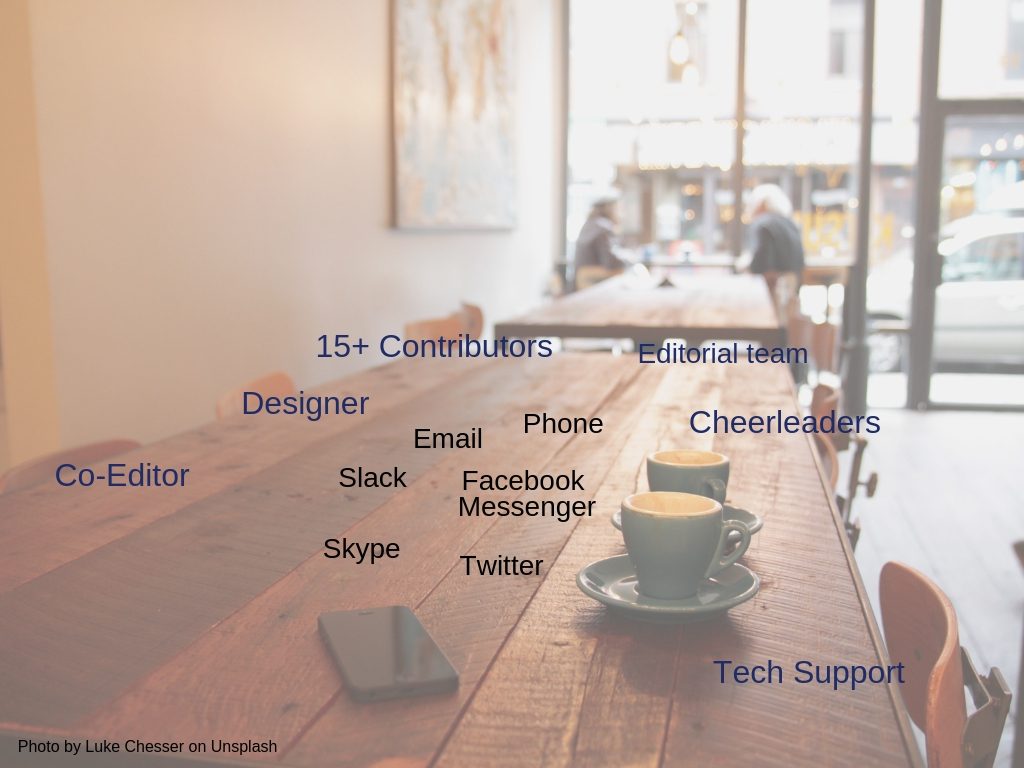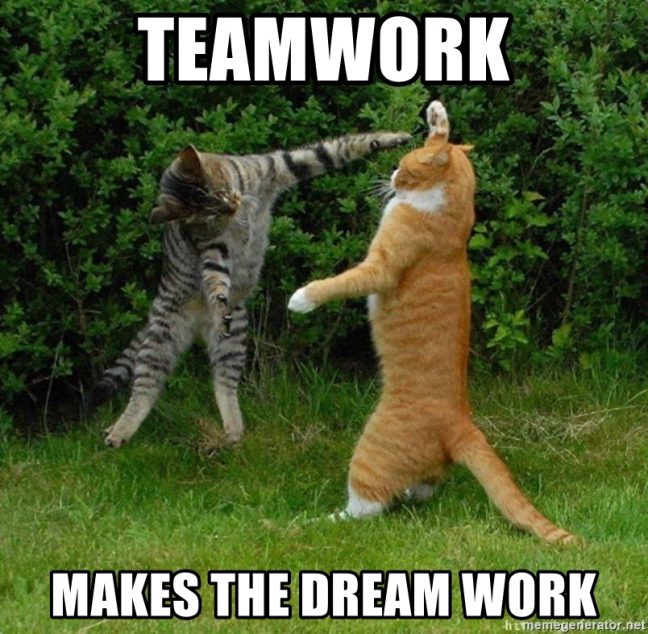I’m currently participating in the eCampus Ontario Extend mOOC focused on technology enabled learning. As part of this medium sized Open Online Course (mOOC) it was suggested that participants keep an ongoing set of notes to document and organize their thoughts about the experience. As a way to document my experience I’m going to be keeping informal blog notes that reflect on what I’m learning and the activities I’m engaging in via the mOOC.
Module 4 of the mOOC is called “Collaborator” and is focused on connecting with other instructors, building personal learning networks, and the benefits of collaboration. I’ll be working through this module’s activities this week and will be sharing my work below as I complete it:
Create a “collaborative dinning table” that highlights a project you have been involved in that involves collaboration. Identify the modes and communications tools use use to collaborate, describe each person you worked with.

Above is the collaborative dinging table that I created for an ongoing project I’m working on. Most of the folks I worked with are from the Canadian history discipline or adjacent fields in academia. The exception being the tech support and graphic designer folks, which have completely different skill sets from any one else around the table. I think one of the reasons I love work with the co-editor/co-project lead of this project is that we have overlapping and complimentary skills sets – we each have definite strengths are are happy to let the other one use those strengths when appropriate.
For this project, we’ve used a huge range of communication tools – partially because of how many people are involved. The most commonly used are likely email and Facebook Messenger, email for contacting contributors and Facebook for quick questions with my primary collaborator.
One thing I didn’t list on the table, but likely should have, was Google Sheet and Google Docs. A lot of editing and task lasts for this project have found their home their and this project likely wouldn’t have stayed organized without those task lasts.
From the materials presented in this module, brainstorm some specific activities that you can engage in to cultivate and expand your PLN.
I’ve been using Twitter as a way to expand and grow my PLN for a number of years – and most of long term collaborators are folks I have met digitally either through social media, blogging, or national committee work.
One thing I’ve been meaning to do in terms of my Twitter network is actively cull who I follow and make a better use of the list function. It can be hard to hear the productive voices for all of the noise some times.
Some of my favourite ways to grow my PLN include:
- Actively asking for help/advice from my professional network
- Volunteering for collaborative opportunities (when my time and commitments allow)
- Asking colleagues for introductions if there is someone I am interested in working with or meeting.
- Being actively engaged in professional networks such as the National Council on Public History. I often find I connect with new folks via their annual meeting and by following the NCPH newsletter and social media channels.
- Finding new blogs to read! Sometimes engagement isn’t in the cards and you need to expand your learning journey through reading and reflection. I love finding new scholars and new ideas to help expand my perspectives.
Mapping your own PLN. The Mapping Your PLN asks you to consider and then represent who belongs to your PLN.
My PLN-MAP looks at developing a professional learning network connected to the inclusion of Indigenous knowledge and Indigenous worldviews in Open Education Resources. The PLN is divided into a few sections, including academic colleagues, Indigenous community partners, existing OER projects, and Indigenous knowledge organizations.
I really like how visual this exercise was and it allowed me to think through some of the gaps in my proposed network and areas when I need to focus on building relationships.

